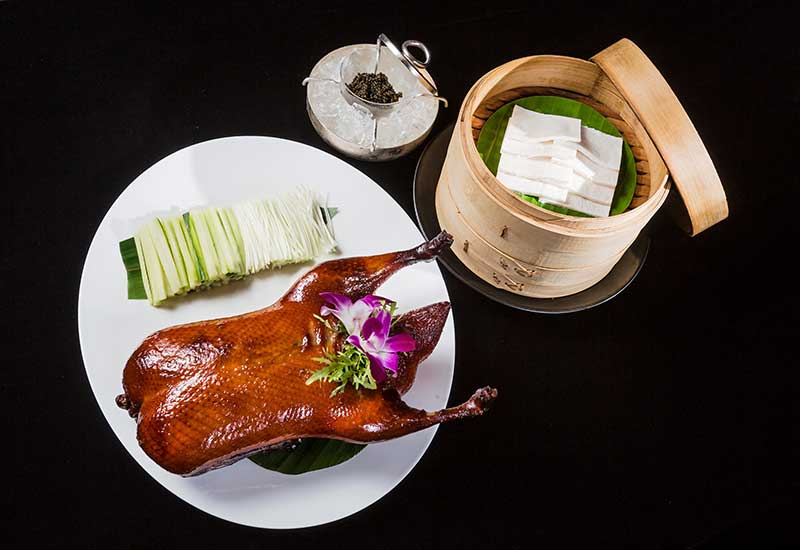What are some challenges you face when it comes to Chinese cuisine?
Xu: It can be a challenge to source Chinese seasonal produce such as the crayfish and Mitten crab (also known as hairy crab) which are very popular in the summer and winter season. We find that it can be a challenge to get these ingredients in Dubai.
Siong: At Hakkasan, it is vital that every element of the restaurants meet the standard set across the world. In terms of the cuisine, the challenge is making sure every dish we send out is perfect. To achieve this, all the elements must come together from sourcing the finest produce to employing and training the best chefs. Striving for perfection, while constantly looking for new ways to add innovations to the Hakkasan menu, is a great challenge to have though.
Barman: Due to the fact that the food is so easily adaptable, there are a lot of variations available, such as American style Chinese or Indian-Chinese and even Filipino-Chinese food. Staying true to authenticity can be a challenge when researching and developing dishes that would suit our concept.
Nong: We have an extensive menu with many options, hence ensuring fresh produce and ingredients for all these dishes can be challenging sometimes. Ultimately, we have to be flexible and change our offering according to the seasonal produce available on the market.
Pang: Whilst many guests are extremely familiar with authentic Chinese cuisine, we still have many visitors that have never used chopsticks before or know what dim sum is. Every staff member who works at Yuan (both front- and back-of-house) is Chinese and extremely well trained in guiding our guests through the experience.
Is it easy to source the ingredients that you need?
Xu: As mentioned above, it can be difficult to source certain ingredients. However with the increase of Chinese restaurants in the region and the addition of a Chinese farm in Dubai, we can generally find fresh and traditional ingredients. Some Chinese dishes, such as pork dishes, require an additional licence but we are able to source alternatives which are also authentic and tasty.
Siong: The challenge with sourcing right produce is maintaining quality, which is not always easy — particularly with the Hakkasan menu. Because most of our recipes call for specific Chinese ingredients, and many luxury items, most of the time we have to import them. Our chefs tend to spend months before a new menu launches sourcing the right produce for each dish. We have to ensure that certain ingredients are readily available and, even more important, that the quality is of a consistently high standard.
Barman: Being based in this region makes Asian ingredients very easy to source.
Nong: Sourcing ingredients in this part of the world is never easy. However, we work with very reliable suppliers who remain consistent when it comes to freshness. Often times we source locally grown produce to support regional farmers, whilst our seafood is delivered on a daily basis from local suppliers as well.
Pang: Like anywhere in the world many local speciality ingredients, which are ones that I am used to cooking with, are unavailable outside China. In Dubai, I’ve had to learn how to work with substitutes for ingredients such as rice wine, etc. That said, there is an excellent Chinese supermarket in International City and every time I go there I find 99% of the ingredients I am looking for, which is great. I have really enjoyed embracing the challenges here and have learnt to use ingredients such as camel milk, which is something I would have never even considered cooking with before.

| Advertisement |





